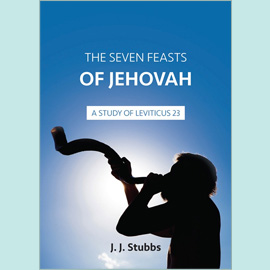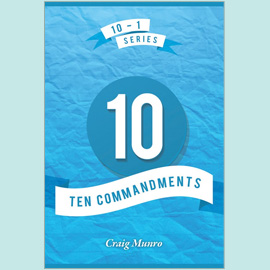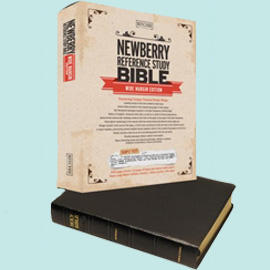
The description of the Altar
The Golden Altar, also called the Altar of Incense, measured one cubit square and stood two cubits high. It stood one half cubit higher than the Table of Shewbread and the Ark. As there are no dimensions given for the Lampstand, which also stood in the Holy Place, it is not possible to state its height for the purpose of comparison. This Altar has the smallest top surface area of any of the Tabernacle furniture. Horns were placed on it, as on the Brazen Altar. The materials used were shittim wood overlaid with gold. A golden crown was placed around the surface, and under that crown were fitted two golden rings into which, when travelling, were placed staves, also made of shittim wood overlaid with gold.
The Altar was placed in the Holy Place in front of the Vail opposite the Mercy Seat which was behind the Vail. It was between the Lampstand, which was on the south, and the Table of Shewbread, which was on the north. Any priest looking towards the Holiest of All would see the Vail before which stood this Altar.
Carrying the Altar
Two rings were fitted to the Altar for it to be carried. If there had been four rings, one in each corner, it would have been a seemingly straightforward arrangement, but two rings seem to be somewhat irregular and even out of place. Whatever the Lord decrees must have a purpose, and there is design in the use of two rings. The Altar was only one cubit square and therefore if there had been four rings the Altar would have been carried "square on" to those who carried it. That would have resulted in a distance of one cubit between each of the staves, and it would then have been possible for two men to carry it, with the ends of the two staves resting on their shoulders. The suggestion of Raven1 is interesting in this respect: "As there were only two rings on the altar, on diagonally opposite corners, then it must mean that the altar had to carried diagonal-wise between the two poles. This would mean that the altar would no longer fit comfortably on the shoulders of two men, for the poles would now be about 25 inches apart, the obvious inference being that although the altar was not heavy in man’s eyes, yet God required four men to carry it because, although small, it was very weighty before God". When the cloud moved and Israel followed, the Golden Altar was covered with a cloth of blue and over that a covering of badgers’ skins.
Sweet incense for the Altar
Blood was not placed on this Altar, except once a year on the Day of Atonement. Aaron entered the Holy Pace every morning and evening with a two-fold purpose; he tended the Lampstand to ensure that the light did not go out, and he burned incense upon the Golden Altar. Other priests were also allowed the privilege of placing the incense on the Altar as Deuteronomy 33.10 reveals: "they shall put incense before thee" (before thy nostrils - JND). Clearly an Altar overlaid with gold was not constructed to bear the heat of the sacrificial fire.
Coals from the Brazen Altar were, nevertheless, used. They were placed in a censer into which was put the incense, the coals releasing the fragrance. It was thus the coals, the flames of which had engulfed the sacrifice, which were used to release the sweet fragrance that permeated the Holy Place. It was this incense, with a fragrance released by the flame, which was put on the Golden Altar. In addition to the daily burning of the incense, it was also taken into the Holiest of All on the Day of Atonement (Lev 16.12-13).
The composition of the incense is given in vv.34-38, but the clear instruction in v.9 is that no "strange incense" was to be offered thereon, together with the injunction that no burnt sacrifices, meat offerings, or drink offerings were to be placed on the Altar. There must be no deviation from the clear recipe for the spices. The instruction for burning the incense is very precise. The first half of v.8 is almost a repetition of v.7; a human hand would have combined the two with one short sentence by adding "and evening" to the words in v.7, "burn thereon sweet incense every morning". But greater accuracy is demanded, and the morning and the evening duties are separately described.
The significance of the Altar
Morning and evening the sweet incense from the Golden Altar ascended to heaven, a fragrance that constantly permeated the atmosphere of the Holy Place. It would not be possible to enter without being aware of it and the fragrance of it would cling to the garments of those who entered. What lessons can be learned from it?
First, it was not possible to hide the fact that a priest had been in the Sanctuary. There was about him a fragrance that could be gained nowhere else. It could not be obtained by using other ingredients to form a false batch of "sweet spices"; the counterfeit would be noticed. The pure sweet spices could not be applied elsewhere because such a use was prohibited (v.37). Only in the Sanctuary could the atmosphere of the Sanctuary be enjoyed. But if the mark of the Sanctuary was on those who entered, the absence of it revealed that the Sanctuary had not been entered.
Second, the priest who approached the Golden Altar was at the point in the Holy Place nearest to the Ark in the Holiest of All. Every day, when the incense was being placed on the Golden Altar, the priests were as close to God as it was possible for them to be.
Third, what took place at this Altar represented the prayers of the saints (Rev 8.3). Although it is a future day to which reference is made, the reference to the "golden altar which was before the throne" indicates that this is not limited to that time. To all the prayers and intercessions of the saints the Lord Jesus adds His incense, speaking of the sweetness of His person and work, and this makes them suitable for presentation to God. The Holy Place was continually filled with this incense signifying the continual enjoyment by God of the prayers of His saints, which are only acceptable to Him because they are presented to Him through the Lord Jesus Christ.
Blood on the horns of the Altar
On the Day of Atonement the High Priest went out from the Holiest of All. "And he shall go out unto the altar that is before the Lord, and make an atonement for it; and shall take of the blood of the bullock, and of the blood of the goat, and put it upon the horns of the altar round about. And he shall sprinkle of the blood upon it with his finger seven times, and cleanse it, and hallow it from the uncleanness of the children of Israel" (Lev 16.18-19). The bullock was the sin offering for Aaron and his sons and the goat was the sin offering for the people. Such is the character of man that his presence in the Tabernacle demanded that atonement be made for it, as it was defiled by the presence of men.
The Hebrew writer refers to this when he states that "it was therefore necessary that the patterns of things in the heavens should be purified with these; but the heavenly things with better sacrifices than these" (Heb 9.23). If the blood was necessary to ensure that the purity of the Sanctuary was maintained, in like manner the heavenly Sanctuary was to be kept clean. It may be that the writer has in view the defilement that would come from the activity of Satan and his forces, but this hardly is seen in the Tabernacle. As it was the presence of men that could defile, is this not also what Hebrews has in view? The preservation of the heavenly is all dependent on the blood and there is no danger of those who are Christian priests entering there and defiling it; all has been dealt with at the Cross.
As the incense arose from the Altar it passed by the horns on which the blood had been placed. The acceptance of the prayers of the saints, and the fragrance which the Lord adds to them, is based on the blood alone.
Much incense is ascending
Before the eternal throne;
God graciously is bending
To hear each feeble groan.
To all our prayers and praises
Christ adds His sweet perfume,
And love the censer raises
Their odours to consume.
(Mary Peters)
1 God’s Sanctuary, p204









